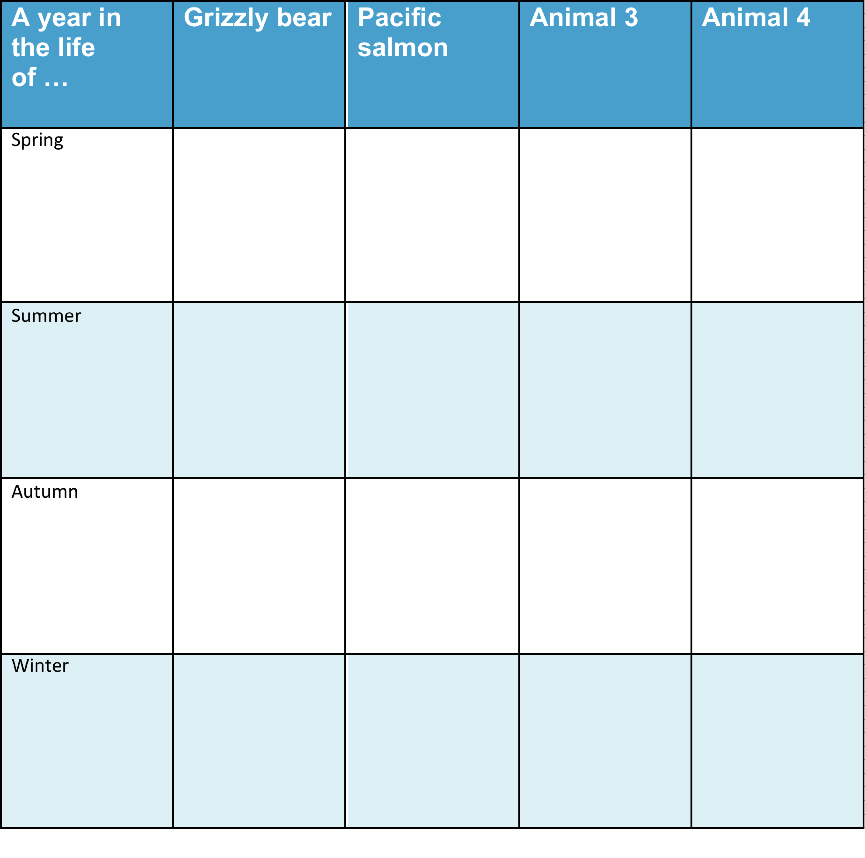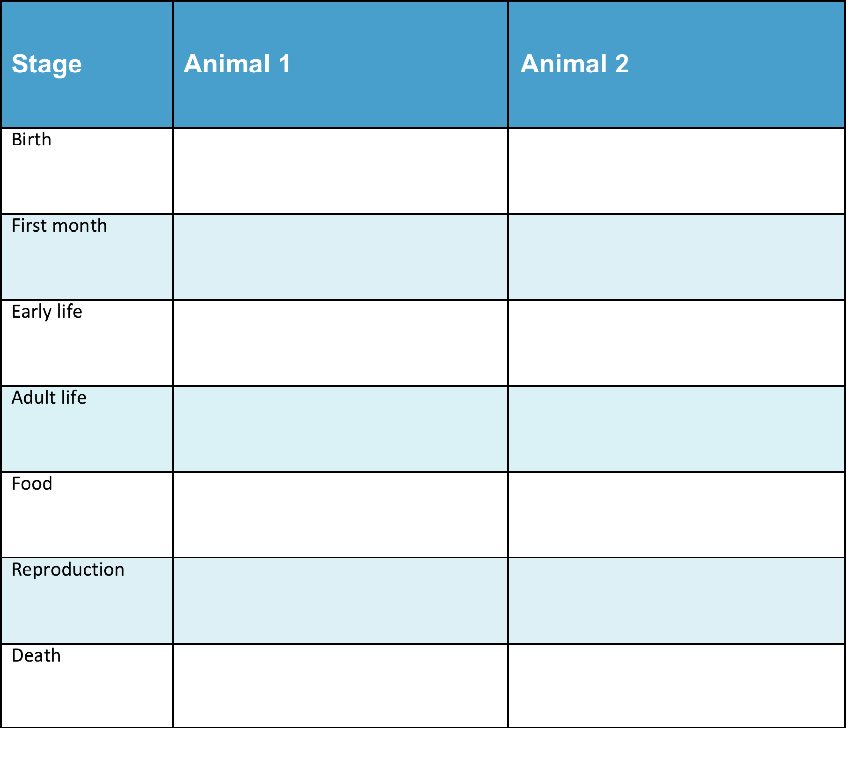Information for Teachers
Curriculum links
Australian Science Standards
BS (ACSSU43) Structural features and adaptations of living things assist their survival
SS01.2 All life forms, including human life, are connected through ecosystems on which they depend for their wellbeing
New Zealand Science Achievement Objectives
LW: The interdependence of living things in an ecosystem
LW: The key structural features and functions involved in the life processes of plants and animals
Helpful websites
You may want to direct your students to some or all of these websites to help with their investigations.
Atlantic salmon:
http://asf.ca/main.html
Grizzly bears:
https://seagrant.uaf.edu/nosb/papers/2002/skyview-bears.html
http://www.katmaibears.com/ursusarctos.htm
At this website, there is a camera that can show you what the bears are doing at Brooks Falls.
http://explore.org/live-cams/player/brown-bear-salmon-cam-brooks-falls
The bears are there during summer. The rest of the year the website shows video of what the bears were doing last summer.
How to search the internet
1 Keep your request short
Fewer words will give a more accurate search.
2 Choose exactly what you want
For example: Arctic Circle Climate
3 Use quotes
Double quotes around a set of words tell the search engine to consider those exact words in that exact order without any change. For example: “Arctic Circle Climate”
4 Use the plus sign (+)
If you add a plus sign (+) between words, the internet will search for all the words. For example: migrate+birds+whales+mammal
5 Use the minus sign (–) to say what you don’t want
Use a minus sign (–) to show words you do not want to appear in your results. For example: if you search for burrowing animals and do not want mammals in your search, –mammals will exclude mammals. Note that you need to put a space before the minus sign for the word to be excluded.
6 Be very clear about what you don’t want
Part 1
Ask questions and make predictions
After reading The Salmon Stream, you may have many questions about the relationship between different species of animals.
List your questions.
- Compare your list with questions that others have.
- Choose a question you would like to investigate.
- You can work alone, with a partner, or in a small group.
You may want to choose one or more of these questions to investigate
Q1. Investigate other species of animals that have very different life cycles that come together at specific times during a year.
Q2. Salmon lay a huge number of eggs in an extremely difficult place to spawn. Why do they do that? What other species have a life cycle that is similar to this?
Q3. Investigate the ways in which climate change may affect the grizzly bear.
Go to Part 2 Plan and investigate →Part 2
Plan and investigate
Do searches in the internet or in books or talk to people who can help to find the information you are looking for.
Your teacher may suggest suitable websites for further information.
Go to Part 3 Record and analyse data →Part 3
Record and analyse data
Find a way of recording your information that will allow you to see any patterns in the data.
Data Chart for comparing the lives of animals
(Download and change to suit your information)
 Download Chart
Download Chart
Go to Part 4 Evaluate the information →
Part 4
Evaluate the information
1. Look over the information you have gathered and the patterns you have found.
What brings the life cycles of your animals together?
Why does this happen and are both animals better off for this?
2. Search for other patterns.
What do these patterns tell you about life cycles? Why? What might happen in the future? Do you think that climate change will affect these animals? Why?
3. Make notes about what you find.
Go to Part 5 Communicate and share ideas →Part 5
Communicate and share ideas
Look over all of the information that you have gathered in your investigation.
What are the most important ideas about your topic?
Make a chart showing the most important ideas.
 Download Chart
Download Chart
← Return to menu
